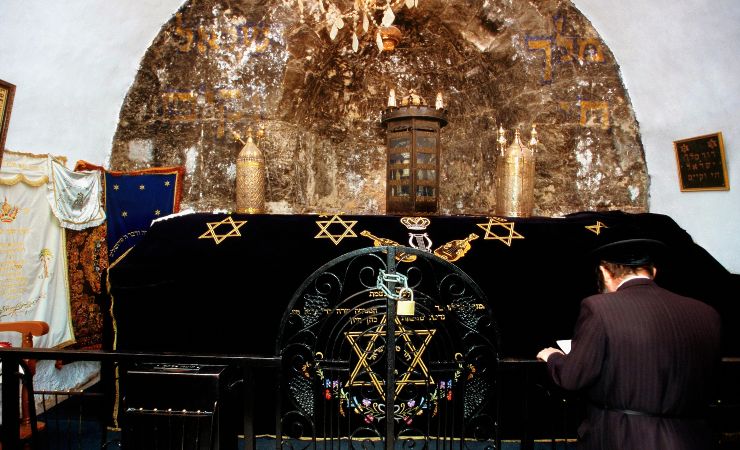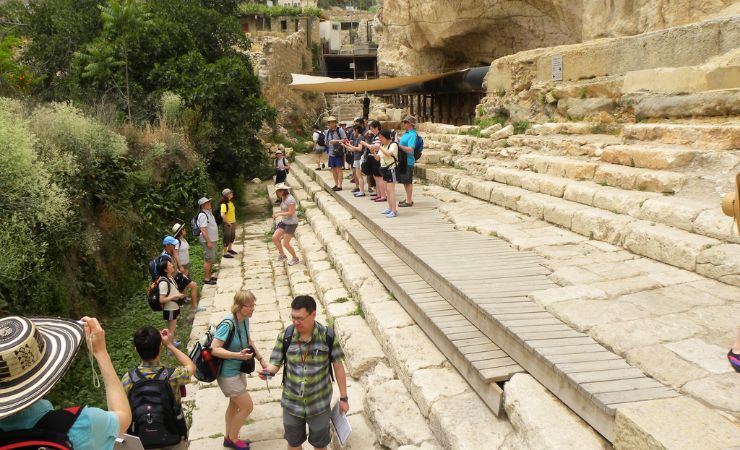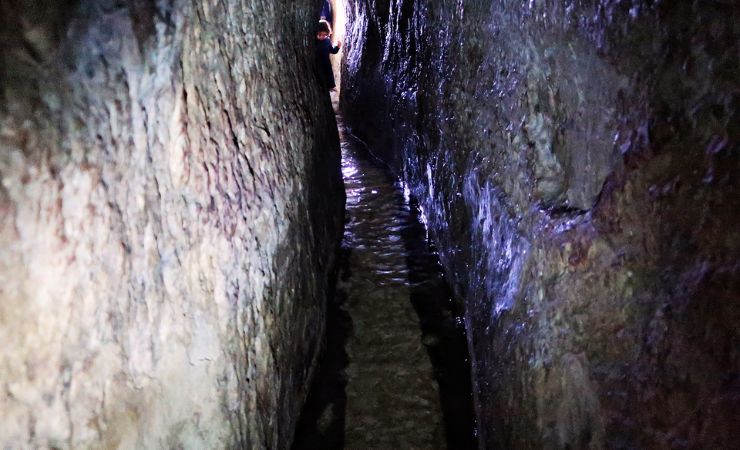Tel Gezer: From Canaanite City to Biblical Landmark
Originally published: July 2024 | Last updated: May 2025
Tel Gezer, one of Israel’s most significant archaeological sites, is strategically located and frequently mentioned in historical texts, provides a vivid window into the past civilizations that once thrived here.
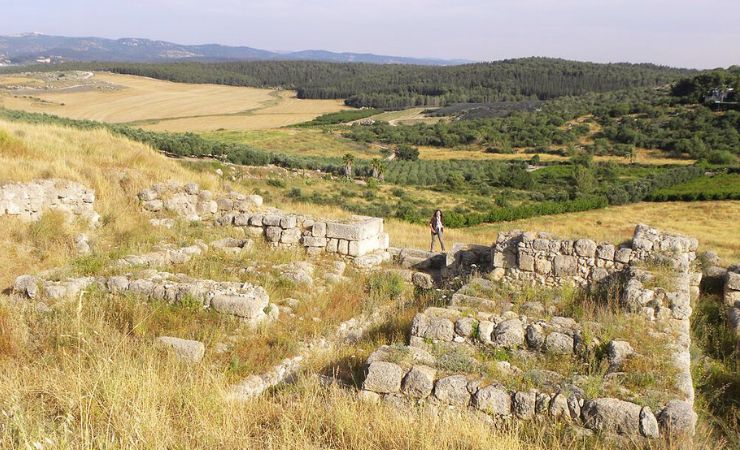
Where is Tel Gezer Located?
Tel Gezer is situated in the Shephelah region of central Israel, near the modern city of Ramla. This strategic location made it a key city in ancient times, controlling the trade routes between Egypt and Mesopotamia.
Biblical context
Tel Gezer is frequently mentioned in the Bible, highlighting its historical and strategic importance. It was one of the Canaanite cities conquered by Joshua and later given to King Solomon as a dowry gift from Pharaoh. Here are some significant biblical references to Gezer:
- Joshua 10:33: The first mention of Gezer in the Bible occurs when Joshua leads the Israelites in their conquest of Canaan. Horam, king of Gezer, comes to aid Lachish, but Joshua defeats him and his people, leaving no survivors: “Then Horam king of Gezer came up to help Lachish; and Joshua smote him and his people until he had left him none remaining.”
- Joshua 12:12: Gezer is listed among the thirty-one cities defeated by Joshua: “The king of Eglon, one; the king of Gezer, one.”
- Joshua 16:10: The Israelites did not drive out the Canaanites living in Gezer, and the Canaanites continued to live among the Ephraimites: “They did not dislodge the Canaanites living in Gezer; to this day the Canaanites live among the people of Ephraim but are required to do forced labor.”
- Judges 1:29: This verse reiterates that the Israelites did not drive out the Canaanites living in Gezer, highlighting the incomplete conquest of the land: “Neither did Ephraim drive out the Canaanites that dwelt in Gezer; but the Canaanites dwelt in Gezer among them.”
- 1 Kings 9:16-17: This passage describes how Pharaoh, king of Egypt, captured Gezer, burned it, killed the Canaanites, and gave it to his daughter, Solomon’s wife, as a dowry. Solomon then rebuilt the city: “Pharaoh king of Egypt had attacked and captured Gezer. He had set it on fire, killed its Canaanite inhabitants and then given it as a wedding gift to his daughter, Solomon’s wife. And Solomon rebuilt Gezer.”



The Site's History
The history of Tel Gezer spans several millennia, marked by significant events and constructions. During the Early Bronze Age, around 3000 BCE, initial settlements with early fortifications were established. By the Middle Bronze Age (2000-1550 BCE), the city expanded significantly, evidenced by the construction of massive city walls and a unique cultic area featuring ten monolithic standing stones (mazzeboth). In the Late Bronze Age (1550-1200 BCE), Gezer came under Egyptian domination, frequently mentioned in the Amarna letters. During this period, major constructions such as a new fortification wall and a palace were erected. The Iron Age (1200-586 BCE) marked a period of significant development under King Solomon, including the construction of the famous six-chambered gate and casemate walls. The city later faced destruction by Pharaoh Shoshenq I.
What Can Be Found at the Site
Tel Gezer is rich with archaeological finds, each telling a part of its long history. Here’s an in-depth look at what can be found:
Solomon’s Gate: The six-chambered gate at Tel Gezer is one of the most significant discoveries attributed to King Solomon. This gate is similar in design to other Solomonic gates found at Hazor and Megiddo. The gate is constructed with three chambers on each side, two strong towers, and an underground drainage channel running in the center. It is integrated into the southern section of Gezer’s casemate wall, immediately adjacent to a large administrative building. This gate system was part of Solomon’s extensive building projects, showcasing the sophistication of ancient engineering and fortification techniques.
Standing Stones (Mazzeboth): The high place at Gezer features ten monolithic stone steles, the tallest being three meters high. These stones are arranged in a north-south orientation, and in front of one of the steles is a large stone basin thought to be used for libations during cultic ceremonies. It is not entirely clear why the standing stones were erected. But it is thought they are part of a Canaanite temple likely served as a site for religious rituals and possibly commemorated agreements or treaties between different tribes.
Water System: Gezer’s water system is a remarkable feat of ancient engineering. It includes a deep rock-cut shaft and tunnel system that provided a reliable water source to the city’s inhabitants. The shaft descends about 25 meters, connecting to a horizontal tunnel that leads to a subterranean water source. This system highlights the ingenuity of the city’s engineers in ensuring a sustainable water supply.
City Walls: The fortifications at Tel Gezer are extensive, reflecting the city’s strategic importance. During the Middle Bronze Age, a massive wall and glacis were constructed, measuring about 7.5 meters high. In the Late Bronze Age, a new outer wall was built, 1,100 meters long and 4 meters thick. These walls are among the few known fortifications from this period in the region, indicating Gezer’s significant political status under Egyptian rule.
Canaanite High Place: The high place is another significant feature at Gezer. This cultic area includes altars and stone steles used for religious practices. Excavations have revealed that this site was actively used during the Middle Bronze Age, providing insights into the Canaanite religious life and practices.
Gezer Calendar Replica (לוח גזר): Discovered in 1908 by R.A.S. Macalister, this limestone tablet dates back to the 10th century BCE and is one of the oldest known examples of Hebrew writing. The calendar describes the agricultural year in ancient Israel, listing seasonal activities such as planting and harvesting. This artifact provides valuable insight into the daily life and economy of ancient Gezer.
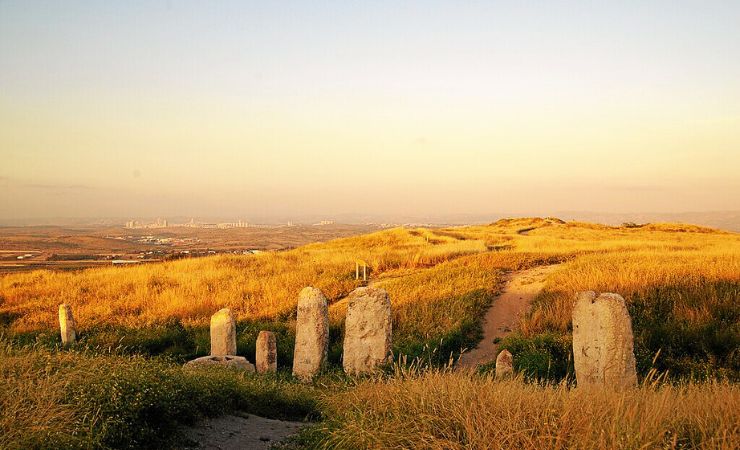
Additional Information
Tel Gezer – Biblical Archeology
Discerning History
New Evidence for the 10th Century BCE at Tel Gezer
End of the 4th millennium BCE:
- First settlement is established at Tel Gezer, utilizing large caves cut into the rock for dwellings.
- Stratum XXVI: Beersheban Chalcolithic period settlement.
3rd Millennium BCE (Early Bronze Age)
- Beginning: An unfortified settlement covers the tell.
- Middle of the 3rd millennium BCE: Settlement destroyed by fire and abandoned for centuries.
First Half of the 2nd Millennium BCE
- Gezer becomes a major fortified Canaanite city-state.
- Massive city walls, stone towers, glacis, and large gate constructed.
- Unique cultic site with ten monolithic standing stones (massebot) and large basin established.
- Large Canaanite water system built.
Second Half of the 2nd Millennium BCE (Late Bronze Age)
- New city wall, 4 meters thick, constructed outside earlier fortifications.
Thutmosid Period (1479–1425 BCE)
- City destroyed by Pharaoh Thutmose III.
- Oldest historical reference to Gezer found at Thutmose III’s Karnak temple.
Amarna Period (14th Century BCE)
- Gezer mentioned in Amarna letters, kings swear loyalty to Egyptian pharaoh.
- Palace constructed on acropolis; remains of possible Egyptian governor’s residence discovered.
Ramesside Period (Late Reign of Ramesses II – 13th Century BCE)
- Climate turns drier and colder, causing turmoil.
- Cities in Canaan rebel after death of Ramesses II. Pharaoh Merneptah captures Gezer; extensive fiery destruction occurs.
- Skeletal remains from Egyptian invasion discovered.
Iron Age (1200–586 BCE)
- 12th–11th centuries BCE: Large building (possibly granary) and olive presses built; mixed population evident.
10th Century BCE (Time of Solomon)
- Urban development and fortifications.
- Egyptian pharaoh (possibly Siamun) destroys Gezer, gifting it to King Solomon as dowry.
- Solomon rebuilds Gezer, constructing a six-chambered city gate.
- Creation of the Gezer Calendar.
- City destroyed again, possibly by Shoshenq I.
9th and 8th Centuries BCE (Iron IIB)
- Population approximately 3,000.
734–732 BCE (Neo-Assyrian Period)
- Gezer besieged and destroyed by Tiglath-Pileser III.
- Major fiery destruction and pillared buildings destroyed.
Late 3rd Century BCE–142 BCE (Hellenistic Period)
- Occupation indicated by artifacts such as amphora handles and coins.
- City known as Gazara under Hasmonean rule.
- Simon Thassi captures and fortifies Gazara, integrating it into Hasmonean kingdom.
Roman and Byzantine Periods
- Sparse population; bathhouses, ritual baths, and rock tombs identified.
- Gradual abandonment during late Roman–early Byzantine period.
1177 CE (Crusader Period)
- Battle of Montgisard occurs near Gezer; Crusaders defeat Saladin.
1871
- Charles Clermont-Ganneau identifies site as ancient Gezer.
1874–1881
- Clermont-Ganneau discovers four bilingual boundary stones.
2023
- Revised interpretations correlating destruction layers with biblical and historical events published. Lindelle C. Webster’s excavation team concludes that correlation of Stratum IX (11th century BCE) with Solomon and Siamun is improbable, and correlates Stratum 8 destruction (mid-10th century BCE) with Shoshenq I’s reign.
Sources and Additional Information
Nearby Sites
- Emmaus Nicopolis: An ancient city with ruins from the Roman and Byzantine periods.
- Latrun Monastery: A Trappist monastery known for its peaceful surroundings and beautiful vineyards.
- Neot Kedumim: A biblical landscape reserve that recreates the agricultural and ecological environment of ancient Israel.
- Tel Lachish – One of the most famous Tels in Israel mentioned extensively in the Bible.

